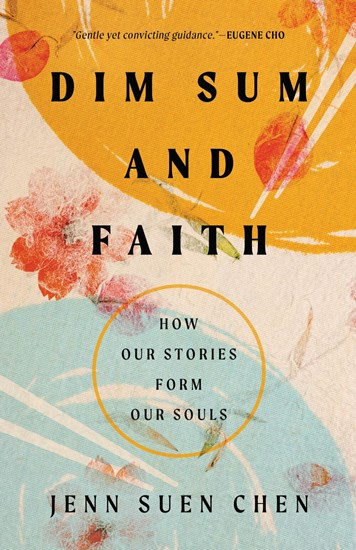
“Why Can’t Our Family Do That?”
This was the mentality that my parents instilled in me when I was growing up. Grounded in cultural (i.e., Korean) and biblical principles, a part of this mindset was for my sister and me to be kind to one another as siblings. But make no mistake about it: in my family, the “family comes first” mentality disproportionately emphasized the need to honor our parents.

Discovering Your Voice
As we learn how to tell our story with God, our voice becomes our superpower and points people to Jesus. It’s not just about knowing our story; it’s about telling it with the voice we have been given.

Son Goku or Superman
One of my favorite stories is Akira Toriyama’s manga/anime Dragon Ball. Loosely inspired by the novel Journey to the West, Dragon Ball follows a young boy named Son Goku, who enjoys martial arts which helps him to fight strong opponents and push his limits. While Dragon Ball never explicitly states its Asian setting, Toriyama prominently features Asian food, martial arts, and characters with dark hair and eyes. These examples may sound simple, but my younger self, who grew up on white superheroes like Superman, instantly felt a deeper connection to Goku as I experienced Asian representation for the first time.

The Songs of Ages
do not forget
the ropes
suffocating the necks of
the Chinese
who sing the song of ages:
we can’t breathe.

I Belong Here: AACC Civil Rights Tour Reflection
Somehow learning that I have an Asian American accent felt fitting after learning snapshots of history. As if I inherited an unexpected gift or was mysteriously re-connected to the Asian Americans who came before me and struggled the same way. While I’ll probably always fumble over Korean, I know that regardless of my proficiency in Korean or English, I belong here.

The Fight Is Never Over
Let us embrace the roots we’ve come from; And stand on the shoulders of our elders; The roots we grow from; The roots we rise from

Where All Parts Belong
When injustices arise in the world, some churches speak up while others stay silent. In one of Jesus’ parables, a priest and a Levite see a man on the road who has been robbed, attacked, and left for dead. Their response is to pass by on the other side. What is the difference between them and a church that remains silent? Are they not the same? Both choose to disregard suffering and look away.
Invisible Leaders
When I think about my grandmother, I wonder, “Wasn’t her life also a ministry?” Perhaps she was not welcome to hold a title or a position in the church, but I believe my grandmother’s life looked a lot more like the life of Jesus than the lives of some of the male church leaders.
Social Justice for the Sensitive Soul: A Pop-Psych Guide to Activism
“Finding your own way in social justice work requires courage, creativity, wisdom, and an openness to possibility. It requires shaking off the unhealthy and unrealistic expectations of others. It asks us to embrace our differences as beautiful and our unique personalities and perspectives as gifts, rather than comparing ourselves to others.”
Creatively Narrating the Stories of Multiracial Individuals: A Conversation with Becky White
My own bitterness towards the Korean society and culture followed me for a long time. I hope I can relieve my fellow mixed Koreans of that same bitterness by providing the words to help us understand ourselves. Perhaps this isn’t explicitly a “Christian” tenet wrapped neatly in a Bible verse; but everything I do, I hope it may be founded in the honest and joyful love of Christ.
Two Halves Make a Hole
When you put two halves together you make a whole. This is basic math. But when you merge different ethnicities the rules of math change.
Book Review: Passport to Shame: From Asian-Immigrant to American Addict by Sam Louie
Sam’s former profession as a storyteller is apparent as he vividly paints a picture as though you are there with him in his humble beginnings and follow him through his highs and lows.
Communi-tea
We are not a myth, Of a minority nor a monolith, Foreign, we are perpetually not. Asians aren’t a footnote, An afterthought
I Didn’t Go to Church This Year…
How can we find peace and hope in the midst of the realities of relationships, anxieties, and responsibilities? Where is the joy?
Not Korean Enough: Experiences of Imposter Syndrome While Leading a Study Abroad, and a Prayer in Response
I have a confession to make: I am not as “Korean” as I appear to be.
Reclaiming Chuseok and Mid-Autumn Festival for My Children
Teaching my children has been extremely meaningful in my own journey of reclaiming the forgotten parts of my identity, even those parts I did not know had been forgotten. There is a deep healing in reconnecting and rediscovering our roots.
The Way Forward Requires Looking Back
Indeed, if we want to understand how to integrate faith and Asian American identity in our current context, we need to learn how Asian Americans in days past wrestled with these same questions and took the steps that brought us to where we are today.
What Box Do I Check?
The world simply doesn’t know what to do with us yet, but they will.
Navigating Spaces as a 1st Gen Indian American
Bridge building is complicated and messy work, and we must intentionally move towards it.
Asian Enough
The more I’ve continued to delve into not just what it means to be Asian or White, but what it means to be Asian and White, the more I’ve been able to understand truly how deep the love and intention the Father’s love is for me
